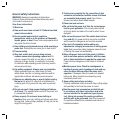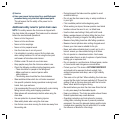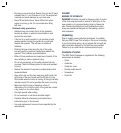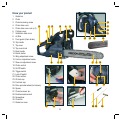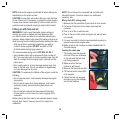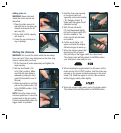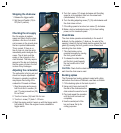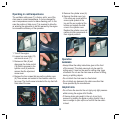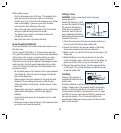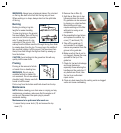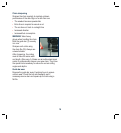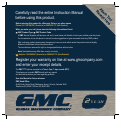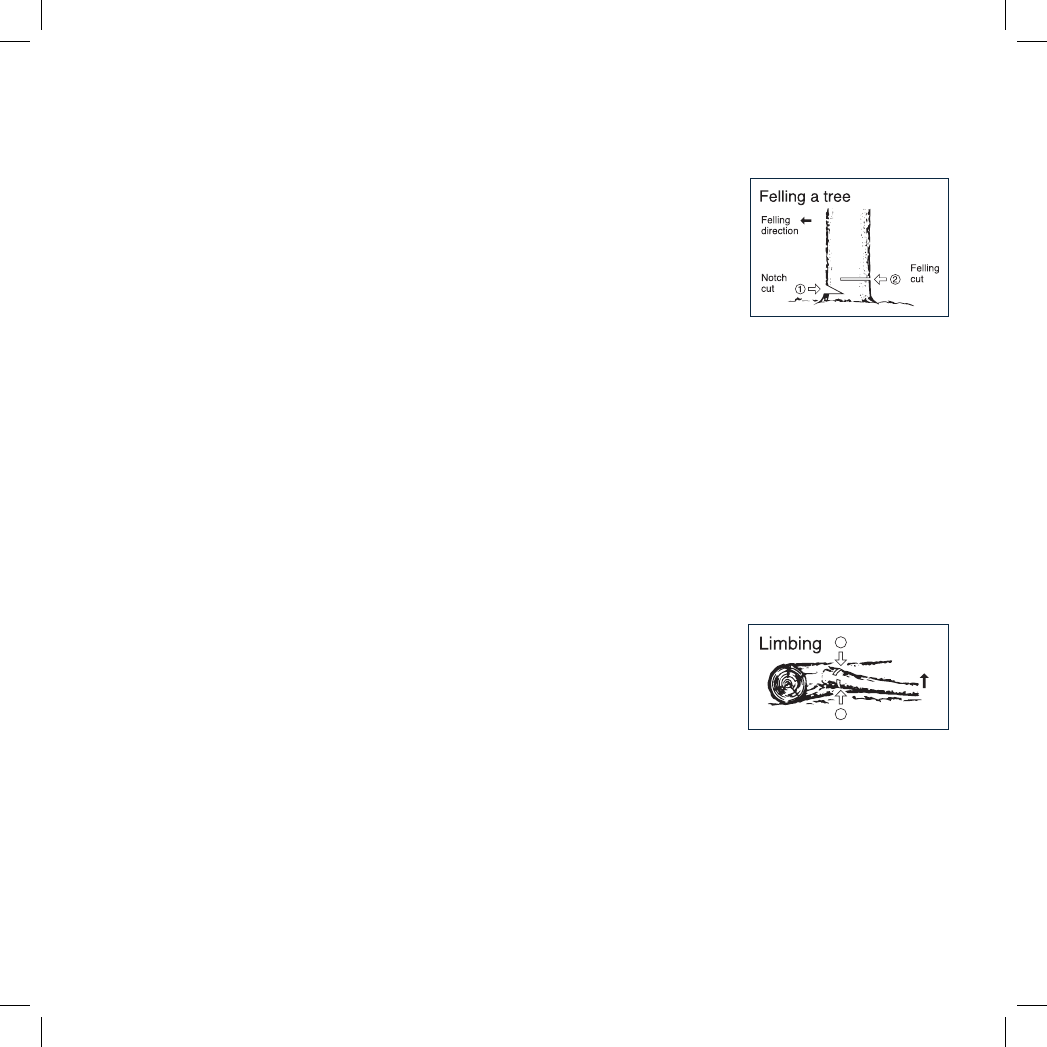
14
While cutting, always:
• Run the chainsaw motor at full revs. This makes the job
safer, as there is less chance of pull-in or kick-back.
• Position your body to the left of the chainsaw so if it kicks
back uncontrollably, it goes over your right shoulder,
never stand in the cutting line of the saw.
• Keep a firm grip with your left hand on the front handle,
with your thumb securely below the handle.
• The swivel of your wrist in a kick-back situation will
activate the chain brake.
• Make sure the chain is tensioned correctly.
Guard against kickback
Check the operation of the chain brake each time you use
the chain saw.
Run the saw at full throttle for 1-2 seconds then push the
front guard (9) forwards. The chain should stop immediately.
If the chain is slow to stop or only slows down you must
take the tool to an authorised repair centre to have the
brake band and clutch drum replaced. Disengage the chain
brake by pulling the front guard backwards until you hear
a click. Do not use the chain saw if the chain brake is not
operating correctly.
• Be constantly aware of the position of the upper quadrant
of the blade tip. This is the part that triggers a kickback
when it hits resistance.
• Never engage the upper quadrant of the guide bar with
whatever you are cutting and avoid contact with any
hidden branches or obstructions. Ensure there is a clear
work area.
• Always clear away brush, vegetation and any obstructing
debris before attempting a cut that might trigger a
kickback.
• Avoid cuts that will cause the chainsaw to jam in a tree
trunk or limb.
• Observe the size of wood shavings, if they become dusty
your chain could need sharpening.
Felling a tree
WARNING. Felling a tree should only be done by
trained operators.
Decide the direction in which
you wish the tree to fall taking
into account the direction
of the wind, the position of
branches, lean of the tree,
ease of subsequent limbing
and bucking and other factors
prevalent at the time.
1. Clear the area around the tree and make sure that you
have a good foothold and clear retreat path.
2. Ensure that others in the area are aware of the felling
and ensure people and animals are well clear.
3. Make a notch cut one-third of the way into the tree on the
felling side.
4. Make the felling cut on the opposite side to the initial
notch and slightly higher than the notch. As the felling cut
gets close to the notch cut, the tree will begin to fall.
5. Remove the saw from the cut, stop the engine with the
on/off switch (19), put the saw down and leave the area
along the retreat path.
Limbing
Limbing is the process of
removing the branches from
a fallen tree.
Check the direction in which a branch will bend before
cutting it. Always cut on the opposite side to the bending
direction so that the guide bar is not pinched in the cut.
For large limbs that cannot be removed in one cut, make
an initial cut from the bent side and finish by sawing from
the opposite direction. Do not remove limbs that are
supporting the fallen tree on the ground until the tree has
been cut into lengths.
1
2
1
2
1
2
1
2
1
2
1
2
1
2
1
2



